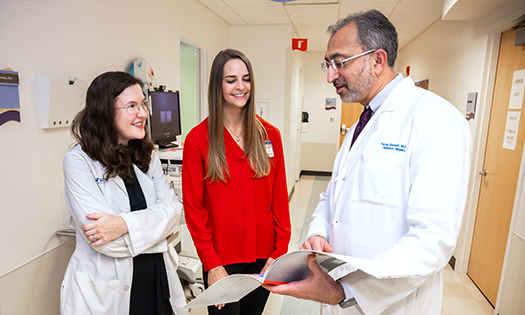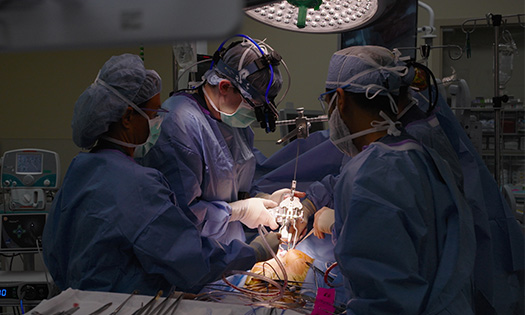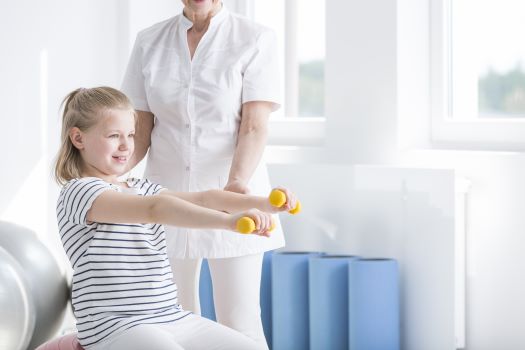In October 2022, a previously healthy 13-year-old boy came to Children's Medical Center Dallas, the flagship hospital of Children’s HealthSM complaining of abdominal pain. Within 24 hours, he progressed to acute liver failure and became severely encephalopathic.
By midweek, he was comatose, intubated and receiving molecular adsorbent recirculating system (MARS) therapy to attempt to clear the ammonia from his body and protect his brain stem. On Friday of that same week, Christine Hwang, M.D., Pediatric Transplant Surgeon at Children’s Health and Associate Professor at UT Southwestern, performed a liver transplant with a normothermic machine perfusion (NMP) preserved liver donation, the first of its kind on a pediatric patient.
Today, he’s preparing to return to soccer practice.
Buying time with molecular adsorbent recirculating system (MARS)
Pediatric acute liver failure (PALF) affects nearly 250 patients in North America annually. Dr. Hwang and her colleague, Amal Aqul, M.D., Director of Hepatology and Medical Director of the Liver Transplant Program at Children’s Health and Associate Professor at UT Southwestern, have deep expertise in PALF and cutting-edge technology, like MARS, to care for patients like this one.
Once the patient had been admitted to the ICU, his condition continued to worsen. Although he had been placed on continuous venovenous hemofiltration (CVVH), ammonia buildup was causing his brain to swell rapidly. This put him at risk of herniating, which could disqualify him from getting a liver transplant and lead to death. MARS uses charcoal to clean the blood, which removes ammonia from the bloodstream more effectively and slows the pace of brain swelling.
“He was exhibiting signs of Cushing’s triad – including his heart rate slowing down, and blood pressure going up,” says Dr. Hwang. “Putting him on MARS bought us time to get a liver for him and take him to surgery.”
Prior to MARS treatment, the patient was non-responsive. After MARS, he showed only basic pain response – but it was enough reaction to provide a glimmer of hope.
“We had talked to the family about the possibility that we could put a new liver in, but mentally and neurologically, he may never recover or be himself again,” says Dr. Aqul. “But he came out of surgery at 10 a.m., and he was extubated, awake and answering questions by 5 p.m.”
Cooperative initiative leads to innovative technology and life-saving care
Due to the seriousness of PALF, a multidisciplinary group at Children’s Health decided to create a protocol to streamline and standardize the care of these patients. This collaboration resulted in the Liver Injury and Failure Team (LIFT), a unique care model that enables all specialists to work together quickly and effectively. As part of LIFT’s mission to provide life-saving care, the team invested in technology like MARS.
MARS is essential in cases where traditional liver and kidney dialysis are insufficient. In extremely acute cases of PALF, MARS can enable practitioners to stay ahead of the ammonia build-up that leads to herniation.
In this case, MARS likely changed the trajectory of this patient’s life by keeping him in stable condition for transplant.
“Without MARS, this patient never would have made it to surgery,” says Dr. Aqul. “His brain was still swelling, but we were able to control it enough to keep the brain from herniating.”
Technology wasn’t the only factor that led to a successful transplant – LIFT’s depth of expertise and collaboration was essential to provide the high-acuity care this patient needed.
Spearheaded by Dr. Aqul, LIFT’s team members include hepatologists, hematologists, nephrologists, transplant surgeons and ICU providers. LIFT’s protocols begin as soon as a diagnosis of PALF is entered into Epic. At that time, attending physicians follow standing orders for labs and diagnostic services. Additionally, notifications are sent to member physicians involved with LIFT. They can then consult with attending physicians when they need additional support from experienced PALF providers. This process enables the team to collaborate in real-time to develop the treatment plan that will best address PALF patients’ critical needs.
A healthy liver and a healthy boy
Once MARS helped reduce swelling to a level where surgery was possible, Dr. Hwang could focus on the task at hand – attempting a liver transplant. Pediatric liver transplants have thus far only used donor organs that have been kept on ice, but in this case, the liver was delivered using a promising new technology called NMP.
NMP has shown great promise for increasing the number of livers available by utilizing organs that might not typically be considered for a transplant. Instead of lowering the temperature of the liver during transport, it is connected to the NMP system, which perfuses it with warm, oxygenated blood and allows it to resume function before it is transplanted.
Using NMP accomplishes several things. A liver on NMP can be continually checked for functionality, allowing surgeons to transplant an organ that works optimally. It also increases the amount of time that can be taken from donation to transplant surgery. As shown in the PROTECT trial, NMP reduces biliary complications. Bile duct complications were reduced by 83% at six months post-transplant and 75% at 12 months post-transplant using NMP rather than transporting on ice.
Perhaps one of the most exciting advantages comes after transplant. NMP-transplanted livers have a significantly lower chance of post-reperfusion syndrome (PRS) than livers that are delivered on ice. PRS can occur after the liver has been sewn into the recipient and revascularized, at which point, blood pressure can drop dramatically. This can lead to the need for CPR and to complications such as kidney failure. Without PRS, patients can have a smooth post-operative course and potentially a shorter hospitalization.
Vision: Help more liver transplant patients thrive
Because of the protocols established by the LIFT team and innovative technology embraced by Children’s Health, this patient has resumed everyday life. A week after a life-saving liver transplant, he began his recovery outside of the hospital. Now, six months later, he’s exercising and preparing to join his teammates on the soccer field.
Drs. Hwang and Aqul understand the impact of working as a team. Utilizing LIFT and incorporating MARS allowed them to make history with the first NMP-assisted liver transplant on a pediatric patient. With the help of this novel technology, they are reducing patient stay times and improving outcomes.
“LIFT, MARS and NMP are just the latest examples of how the Children’s Health team is using technology and innovation to eliminate the barriers to health for these kids,” says Dr. Hwang. “Every time we see a child thrive after a transplant or serious illness, it just shows us that it’s all worth it.”
Discover more about LIFT and other innovations in PALF care
Learn about the Pediatric Hepatology Center at Children’s Health


